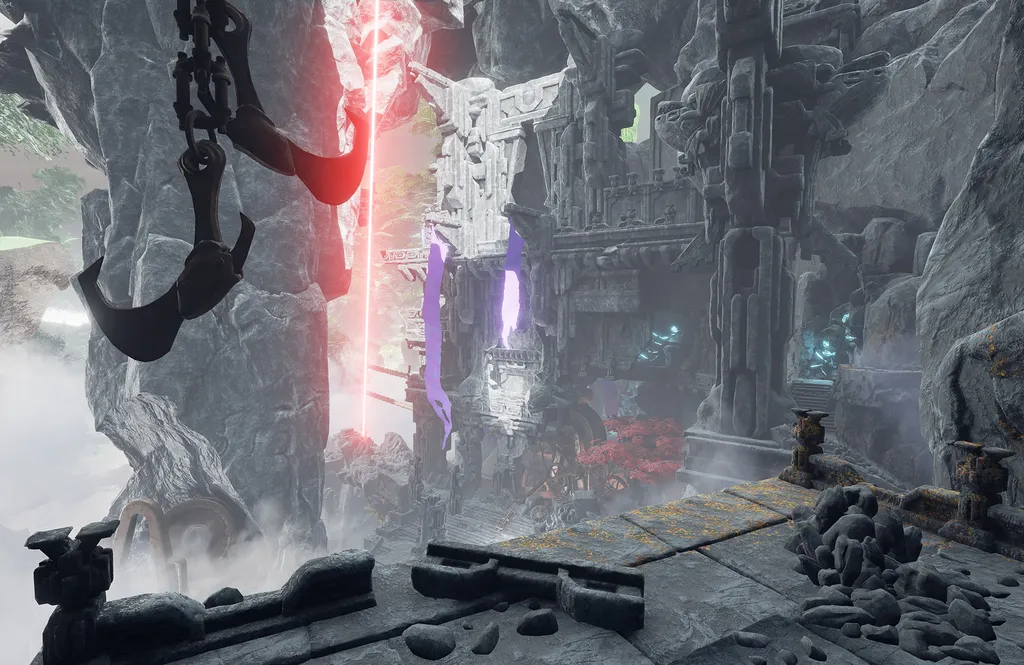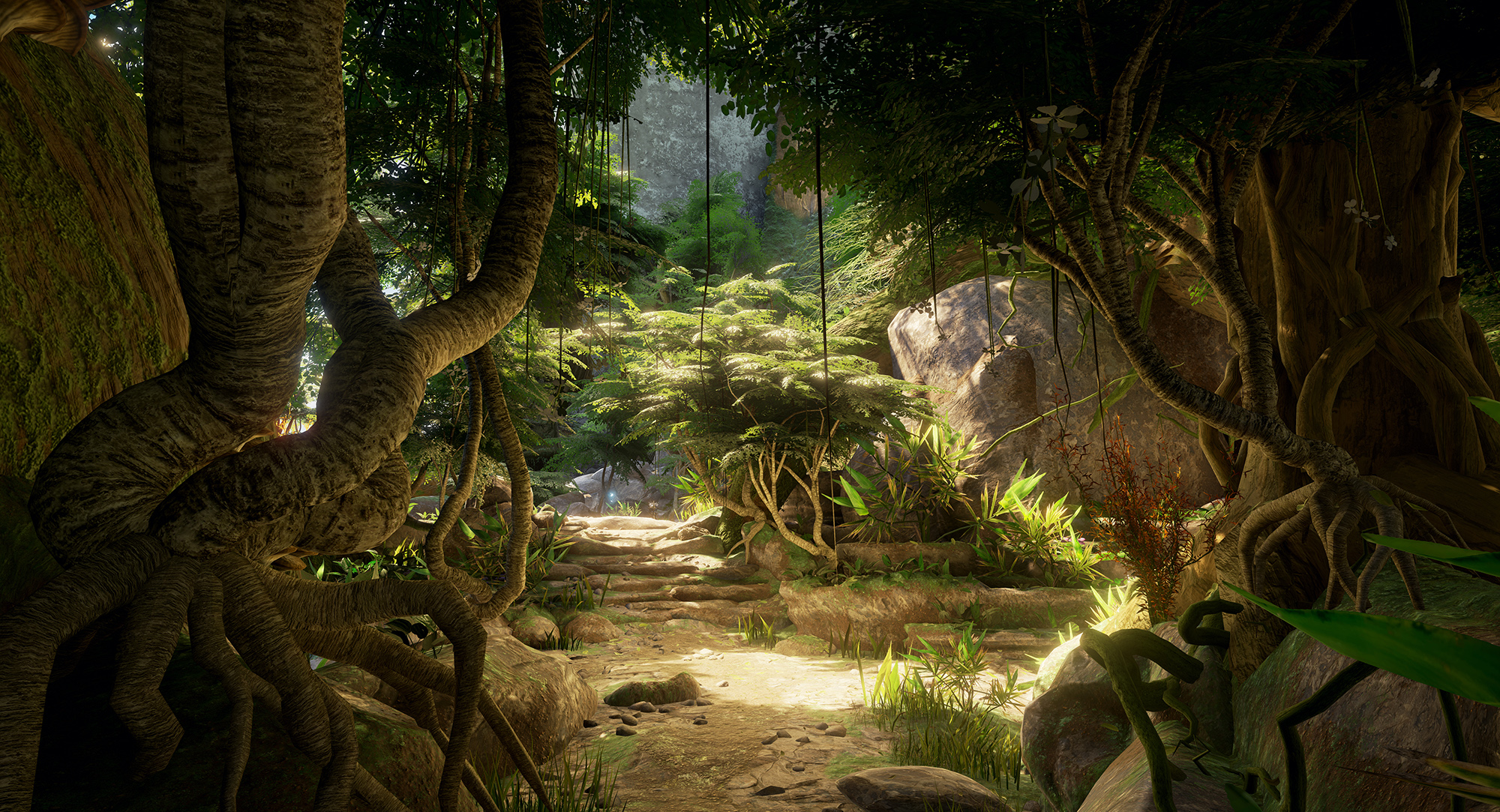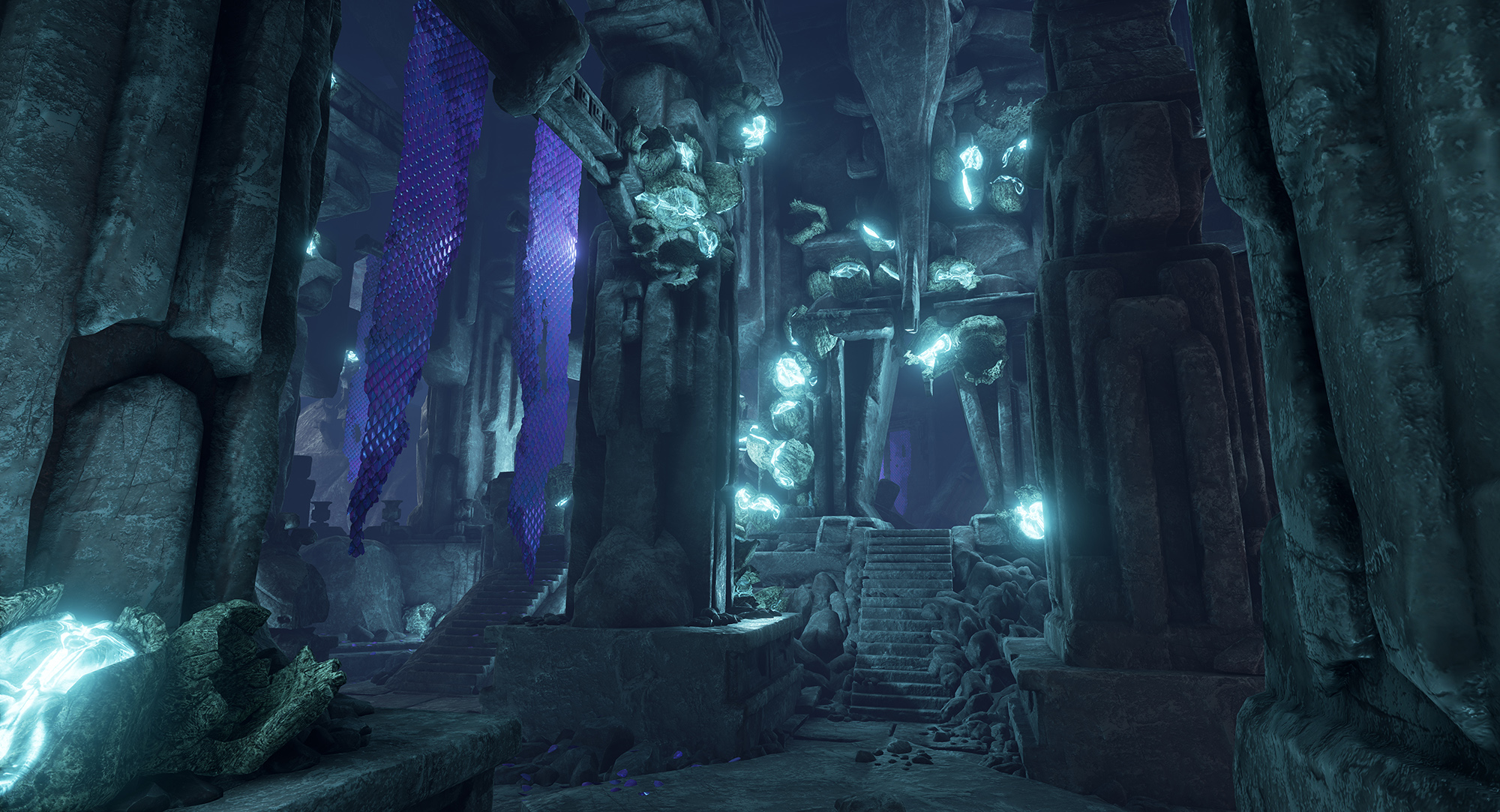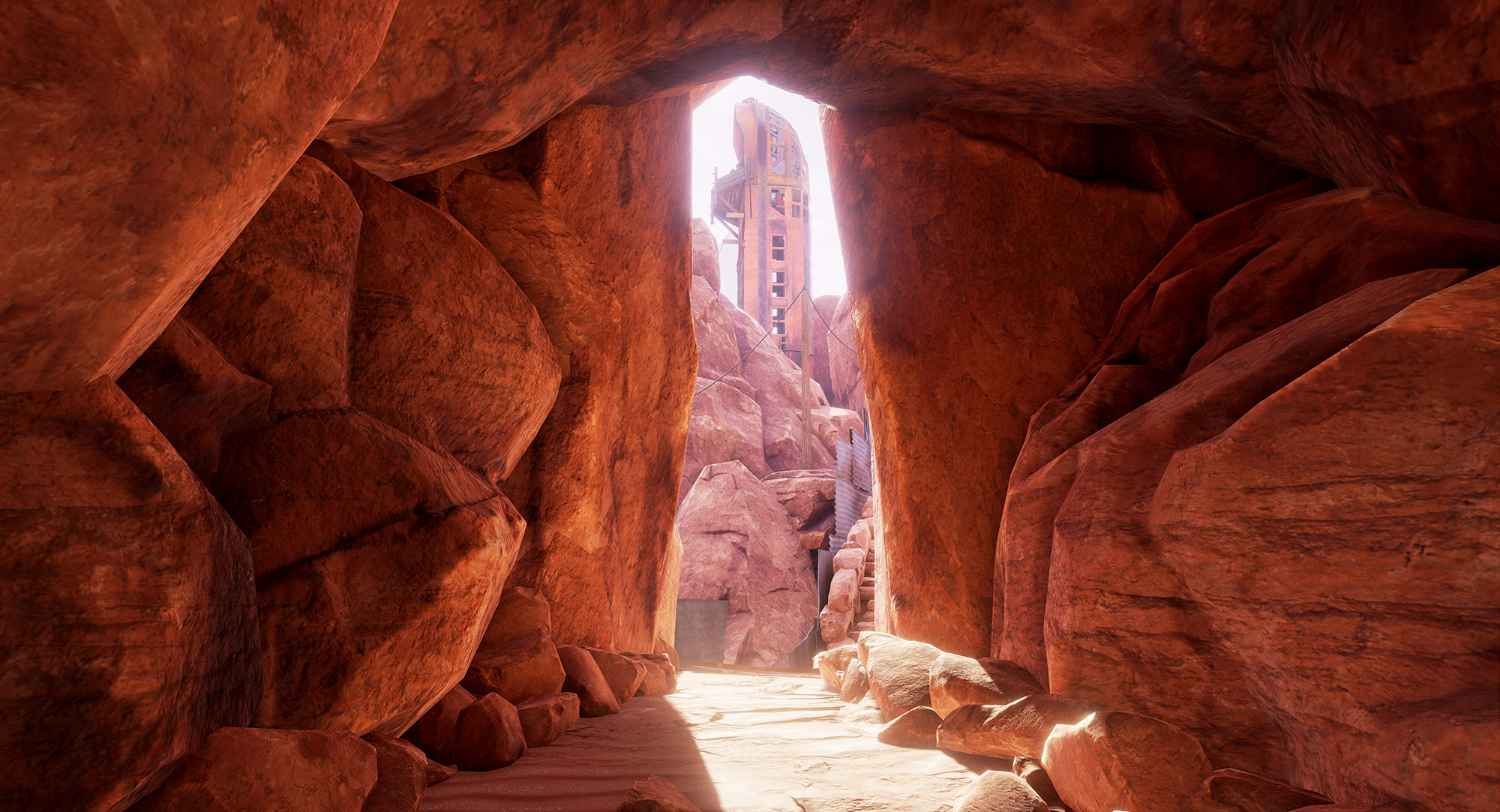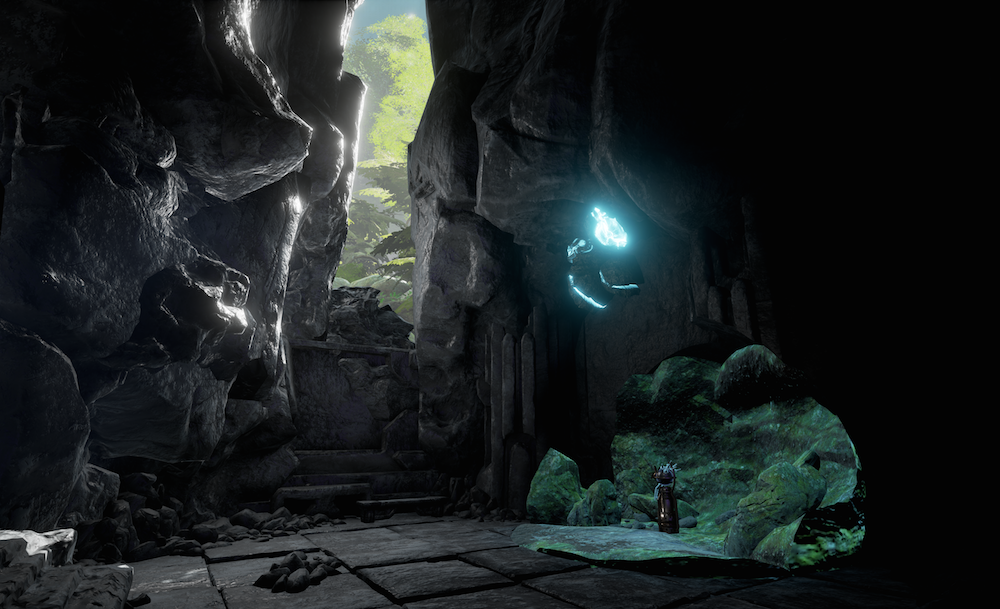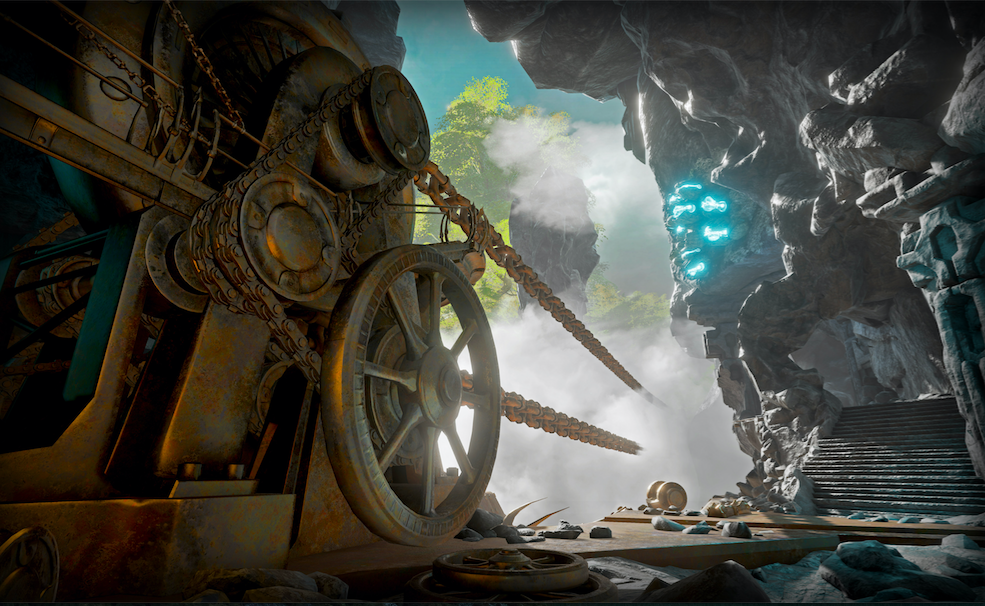Spoiler Free Guarantee: Unlike a lot of virtual reality games, Obduction actually has a fairly involved plot and a mysterious game world with plenty of twists and turns to enjoy. Rest assured that all of those surprises are preserved by this review. Read on with freedom true believers, you need not fear spoilers within this realm.
—
“Where the hell am I?”
This is the thought that rang through my head as I took my first steps into the world of Obduction: a new virtual reality game from Rand Miller and Cyan Worlds, the creators of the classic PC adventure franchise, Myst.
Even if you had never read that last sentence, anyone who has played, seen, or read about Myst will instantly recognize the connection between the two titles. They share the same essential grammar, the same emphasis on puzzles and exploration, and the same sense of “What in the world is going on?!” that lingers with you until the very last moments of the game.
As far as I’m concerned, VR has never had an experience that builds a world better than Obduction. From the opening moments, you’ll feel transported into a realm that has enough similarities to reality to feel familiar, and enough extra-dimensional surprises to feel truly wondrous and unsettling.
The setting of Obduction, while breathtaking inside of VR, is almost impossible to describe outside of the headset. Imagine if you took an emerging Old West town from the turn of the century, imbued it with a Gilded-age aesthetic, filled it with enigmatic characters, and then scooped the entire thing up and transported it into an alien dimension full of purple mountains and multiple suns. That’s Obduction.
The juxtaposition between the normalcy of a wooden shack or cave, against the foreboding sight of an alien sky littered with unfamiliar stars, creates a motivation in you to explore every room, rock, and corner that you can. This is a very good thing because that’s most of what Obduction asks you to do.
Your time in Obduction will essentially be spent doing three things: exploring this mysterious little town to uncover its true nature, solving puzzles to unlock new areas, and cursing silently under your breath.
The first reason for these subtle expletives is that the puzzles in Obduction are hard. Really hard. I consider myself fairly good at solving video game puzzles. In fact, if you’re playing a Zelda or Metroid title, I’m the guy you want sitting next to you saying “What if you tried putting a bomb against that wall?” and offering other advice along the way.
Obduction’s puzzles are, like the world itself, seemingly from another dimension. But let me be clear in that they’re not unintentionally obtuse, but rather that they’re so uniquely challenging because they are so clearly designed with VR in mind. This means that, for the most part, solving an Obduction puzzle is mostly a matter of assessing a scene as if it existed in the real world. There are no cracked walls indicating that an explosive may create a door in Obduction like in Zelda. Instead, you’ll be studying a generator to see where its wires lead in order to determine which crank you need to turn to finally get it powered up. Up close inspection like that isn’t customary for most gamers and it’s something that really shine in VR.
Setting up puzzles this way may make them harder to solve, but it also makes them more satisfying to complete. You feel like a regular Sherlock Holmes when you’re able to deduce from a realistic environment exactly which steps need to be taken in order to unlock your next phase of gameplay.
The other reason you’ll be dropping a few choice phrases as you play Obduction, is because it frankly doesn’t have the greatest controls. This game falls into the same trap that titles like Adr1ft stumbled upon before it. Basically, games that require you to exhaust an environment through rigorous analysis and backtracking don’t agree terribly well with VR in my experience.
The reason for this is that VR can only allow you to move in certain ways and at a certain pace in an open environment without creating motion sickness for a lot of people. Things like incremental turning and teleportation movement are comfort options that make the experience more bearable. However, the problem here is that the pace of backtracking and re-exploring areas multiple times is frustratingly lethargic.
This rings even more true when solving puzzles. You may routinely be faced with a, “I might have missed something all the way back by that rock that will take me 10 minutes to get back to, but I really don’t want to go through the hassle of getting there again.”
This is less of a problem with Obduction in and of itself, and more a hurdle that VR games need to address in general. Obduction does a more than passable job of adapting the genre, but multi-hour long game sessions can be a bit of a drag with games like this. This pacing did lead to me turning down many of the motion sickness prevention features in the name of speed and — predictably — becoming a bit uncomfortable myself. A classic catch-22.
On the other hand, one aspect that really shines in Obduction is its use of sound. Whether it’s music, environmental sound effects, or the dialogue itself, Obduction employs some beautiful filters and spatial techniques to make its world feel vastly more immersive than most.
The final reason you may find yourself adding a few quarters to your swear jar is because Obduction ends up being a surprisingly scary game. Not Dead Space-scary or intentionally horrifying, but more along the lines of , “I do not want to get too close to that freaking window in case something pops up at me!” scary.
This, again, shows the Obduction team’s terrific understanding of not only VR as a medium, but of world design in general. In a 2D game, a window is hardly worth acknowledging. But in VR, every blind curve or smudged glass pane taps into the same part of your brain that makes you fear the gap beneath your bed lest something insidious be lurking beneath.
The story in Obduction is fresh, innovative, and gripping with enough twists and surprises to make it feel less like a game and more like a terrific episode of the Twilight Zone. The in-game performances are all wonderfully delivered and presented in a truly intriguing way that I won’t be spoiling for you here. Rest assured there is a meaty story to hold your interest. You can expect to spend at least 10-15 hours finishing this game, but likely closer to 20 if you possess only a mortal puzzle solving mind.
On a final note, the visuals in Obduction are nothing short of moving. While the sweeping vistas are weakened slightly by the hardware’s resolution limitations (we played on the Oculus Rift with an Xbox One gamepad for this review,) there are enough never-before-seen graphical tricks and techniques used in this game to constantly keep you saying, “Whoa,” or your expletive of choice once again.
While Obduction does have some issues, the fault for them rests less on Cyan as a studio, and more on VR as a new medium that still has room to grow. What can be attributed to these game makers, however, is an amazing world, clever puzzles, a fascinating story, satisfying gameplay, and a title that can stand next to its elder brothers Myst and Riven with pride.
Read our Game Review Guidelines for more information on how we arrived at this score.
—
Editor’s Note: The VR version of Obduction was expected to launch today with the standard PC version, but as of the time of this publication it has been slightly delayed again. UploadVR was provided with early access to the VR Rift version via Oculus Home for the purpose of this review. We are awaiting more information regarding the public release of the VR and Mac versions from Cyan. In the meantime, the PC version is releasing today as expected. Click here for more information about the delay.

